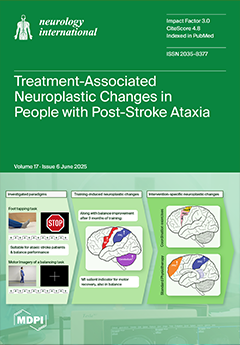Background: Huntington’s disease (HD) is a progressive, autosomal dominant neurodegenerative disorder caused by an expanded CAG repeat in the
HTT gene. Despite advances in understanding its molecular basis, epidemiological data in many countries, including Bulgaria, remain limited. This study aims to present
[...] Read more.
Background: Huntington’s disease (HD) is a progressive, autosomal dominant neurodegenerative disorder caused by an expanded CAG repeat in the
HTT gene. Despite advances in understanding its molecular basis, epidemiological data in many countries, including Bulgaria, remain limited. This study aims to present clinical and genetic findings from a 20-year single-centre cohort.
Methods: A retrospective review was conducted of patients evaluated for HD at the University Hospital “St. Marina” in Varna between 2004 and 2024. Data included demographics, CAG repeat length, clinical features, imaging, and psychiatric assessments. Statistical analysis focused on correlations between variables, with significance set at
p < 0.05.
Results: Out of 79 referred individuals, 43 were molecularly confirmed. The mean age of onset was 43 years, with a four-year diagnostic delay. The average CAG repeat length was 44.6, though two symptomatic patients had reduced penetrance alleles (38 and 39 repeats). Cognitive and psychiatric symptoms were each present in 72% of cases. Depression was significantly more prevalent in women (
p = 0.011). Most patients had a positive family history, predominantly maternal.
Conclusions: Our findings highlight diagnostic delays, gender-specific psychiatric vulnerabilities, and the importance of personalized care. Improved access to genetic counselling and early diagnosis are essential for optimizing outcomes.
Full article






